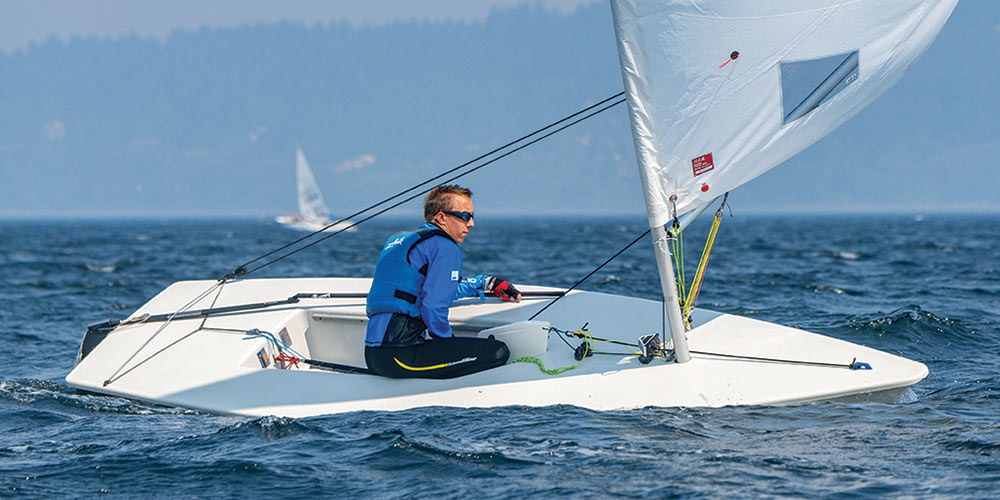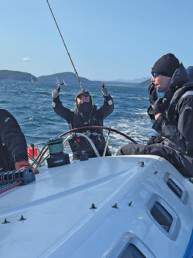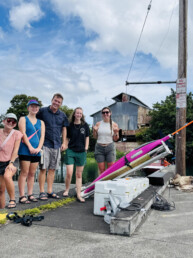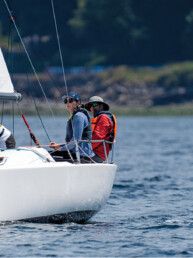Sailing is many things, encompassing an astounding array of diverse skills and avenues, but nobody would say it is easy. When you step foot into a boat you’re captaining for the first time, it is not unusual to spend time stuck in irons or spinning in circles—which is neither fun nor does it entice sailors to come back to try again. Whether your sailing passion or inspiration comes from the freedom to harness the wind, the possibility of a grand adventure, the challenge and camaraderie of racing, or something else entirely, your ability to control your boat in all conditions will allow you to have an experience that is both safe and, importantly, fun.
Youth sailing programs are currently struggling with sailors dropping out at high rates. One commonly cited reason is the heavy focus put on racing, and that racing is not fun for everyone. As a result, there has been an increasingly strong emphasis on fun in recent years. I believe that having fun is a crucial aspect of youth sailing success, but it’s also important to understand that a strong foundation of skills gives sailors the confidence to be safe and succeed—which will enable them to have fun. While sailing can offer lifelong enjoyment, it is complex and is accompanied by serious safety risks. Still, when they are well supported and are empowered by strong sailing skills, it is incredible what very young sailors can accomplish in tiny boats, while having an absolute blast along the way.

The proper use of a tiller extension provides a great example. I am pleased to say that US Sailing is now having dinghy sailing instructors teach the tiller extension on day one. The reason is not simply because they want to get more sailors to progress in racing, but because the habit of using (or not using) the tiller extension is extremely hard to break; and not using the tiller extension is limiting for many types of sailing.
I taught an intergenerational keelboat class at a previous program. The grandfather in one family had a ton of sailing experience, but had never learned how to use the tiller extension. In order to be operated safely in windy conditions, the family’s boat required use of the tiller extension. Since he also couldn’t adapt to using the tiller extension comfortably, the grandfather found he could not sail the boat effectively with or without the tiller extension, and was rightfully frustrated and frightened by this impasse. On the other hand, we all felt very safe with his much less experienced 12-year-old grandson driving because he had been using the tiller extension since he started sailing.
When I came to that program, there were lots of sailors who had been sailing for a long time without ever learning to tack with the tiller extension properly. We spent a challenging year trying to steer away from some of what was taught to them by previous instructors. In that year, several sailors quit because it was so hard to break a habit that made them feel safe and in control. How many of you have seen a sailor hugging the tiller with the tiller extension folded back in a 15 knot gust? Understandably, the sailors felt discouraged that they had to completely relearn how to tack in order to progress.
You might ask why I would force these kids to learn how to tack with the tiller extension, even at such a cost. But the answer is clear, sailors not using this key tool and skill struggled to keep both speed and control, and safety concerns increased as the wind built. After a few years of sailing, the limitations that go along with this lack of skills—tight supervision often in a small sailing area, and a smaller window of wind when they can safely and enjoyably sail—will cause many people to get bored and leave sailing anyway. In a way, it’s a self-fulfilling prophecy, since the limited skills prevent learning fun things like trapezing or spinnaker sailing. But for some, unlearning the limiting habit seems more difficult than the prospect of fun those activities afford.

On the other hand, the sailors who gained control of the tiller extension in all conditions had my full confidence and got to have lots more fun on the water. They were able to get much more out of their sailing experience, from pure enjoyment to competitive success, from deeper learning to more confidence to use their boat however they chose.
We started teaching all the 8-year-olds in the learn to sail classes how to use the tiller extension and they took to it right away. In the time that followed, we began seeing boat owners lending out their keelboats to children, trusting their skills and competence. These sailors had immense freedom to continue to learn and pursue their passions in sailing. I trusted them to be able to keep control over any boat and stay safe. They were able to earn and develop true confidence, and that led them to have even more fun.
However we take to the water, sailing teaches lessons about freedom, independence, resilience, and self-reliance. Without a set of essential skills, as a coach, I cannot give you independence because I cannot trust that you will be safe. If you cannot control your boat, how can you learn new things or have the confidence to go on an adventure? Strong sailing fundamentals, such as the proper use of a tiller extension, are not about helping kids be better racers, but instead help them be safe sailors that can have fun trying new things.
Solvig Sayre is the Youth Sailing Director at The Sailing Foundation, where she works with programs around the Pacific Northwest. She has extensive experience on the US Sailing Team and leading youth programs around the country. Check www.nwyouthsailing.org.






